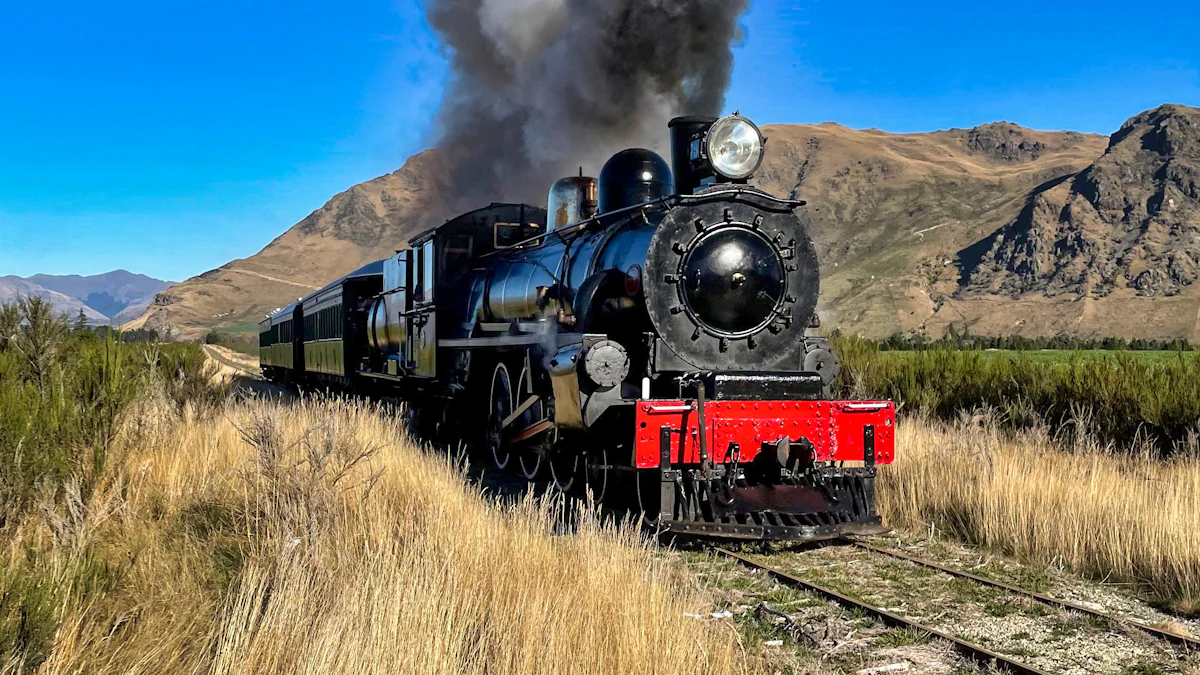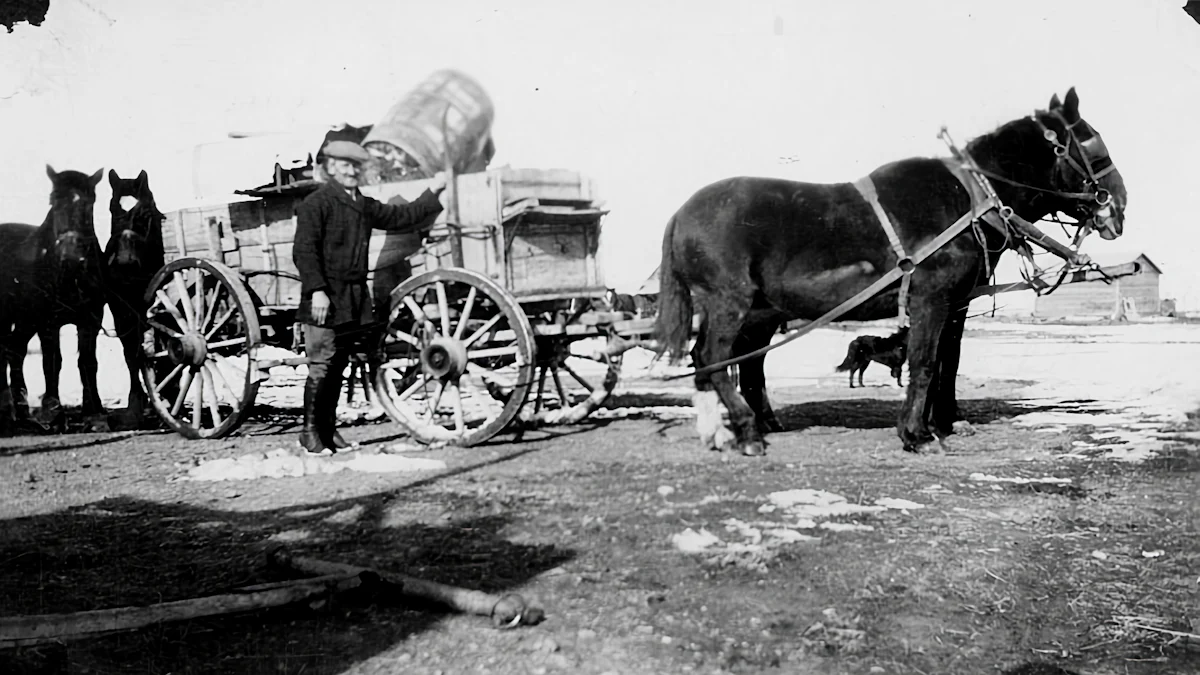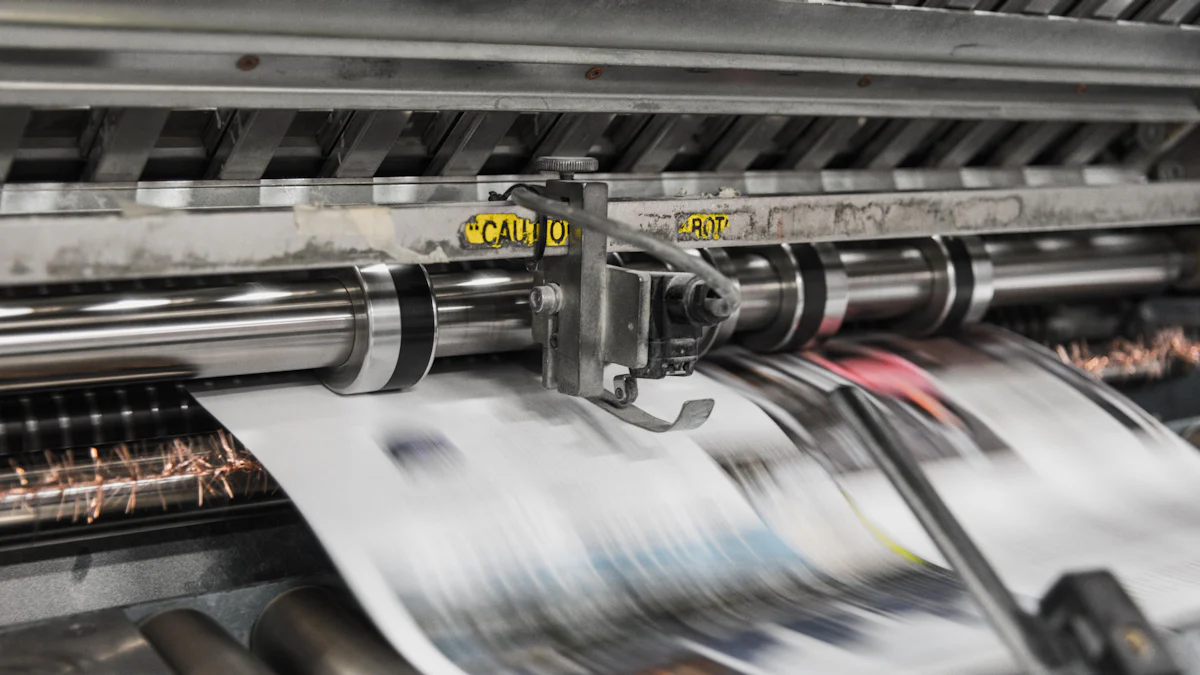100 Innovations of the Industrial Revolution

The Industrial Revolution is recognized as one of the most significant innovations in human history. This era transformed societies from traditional practices to modern industrial powerhouses. While ancient Egyptians and Mesopotamians laid the groundwork with early innovations, it was the Industrial Revolution that sparked a new era. The shift from small-scale cottage industries to mechanized factories marked a pivotal moment. Innovations such as the spinning jenny and steam engine were at the heart of this transformation. The rise of fire-powered engines and steel production reshaped landscapes and economies. The impact of the Industrial Revolution remains profound, influencing every aspect of modern life.
Early Innovations in the Industrial Revolution

The Industrial Revolution marked a period of significant change, driven by groundbreaking innovations. The earlier Industrial Revolution inventions laid the foundation for modern industry. These early innovations transformed traditional practices and set the stage for future advancements.
Textile Industry
The textile industry experienced a dramatic transformation during the Industrial Revolution. The introduction of new machines revolutionized production processes.
Spinning Jenny
James Hargreaves invented the Spinning Jenny in the late 18th century. This industrial revolution invention sparked a shift from manual labor to mechanized production. The Spinning Jenny allowed workers to spin multiple spools of thread simultaneously. This innovation increased efficiency and reduced the need for human labor. Factories replaced home-based production, leading to the expansion of the textile industry.
Power Loom
The Power Loom, another key industrial revolution invention, automated the weaving process. This machine, invented by Edmund Cartwright, further enhanced productivity. The Power Loom enabled factories to produce cloth at a much faster rate. This innovation contributed significantly to the growth of the textile industry. The Power Loom reduced costs and made textiles more accessible to the public.
Steam Power
Steam power played a crucial role in the Industrial Revolution. The development of steam technology transformed various industries.
Steam Engine
The Steam engine, developed by James Watt, became a driving force in the Industrial Revolution. This industrial revolution invention powered factories, ships, and trains. The Steam engine achieved high efficiency and versatility. Industries across Britain and Europe adopted steam power as a standard energy source. The Steam engine's impact on the mining industry was particularly significant.
Steam Locomotive
The Steam locomotive revolutionized transportation during the Industrial Revolution. This innovation allowed for faster movement of goods and people. Railways expanded rapidly, connecting towns and cities. The Steam locomotive facilitated trade and communication. This advancement played a vital role in the industrialization of societies.
Advancements in Manufacturing during the Industrial Revolution
The Industrial Revolution brought remarkable changes to manufacturing. Innovations in iron and steel production transformed industries and fueled growth.
Iron and Steel Production
Bessemer Process
The Bessemer Process revolutionized steel production. Henry Bessemer developed this method to produce steel efficiently. The process involved blowing air through molten iron to remove impurities. This innovation made steel production faster and cheaper. The Bessemer Converter could produce 30 tons of high-grade steel in just half an hour. Railroads expanded rapidly due to this affordable steel. Skyscrapers and bridges became possible with stronger materials. The Bessemer Process was a fundamental industrial revolution invention that reshaped construction and transportation.
Open Hearth Furnace
The Open Hearth Furnace further advanced steel production. This method allowed for more precise control over the composition of steel. Engineers could produce larger quantities of steel with consistent quality. The open hearth process supported the growing demand for steel in various industries. Factories used this technique to create durable products. The open hearth furnace played a crucial role in the industrial landscape.
Mechanization
Mechanization changed how factories operated during the Industrial Revolution. Machines replaced manual labor, increasing efficiency and output.
Assembly Line
The Assembly Line transformed manufacturing processes. Workers specialized in specific tasks along a moving line. This innovation reduced production time and costs. Factories could produce goods on a massive scale. The assembly line became an initial industrial revolution invention that shaped modern manufacturing. Automobiles and other products became more accessible to the public.
Machine Tools
Machine Tools revolutionized precision in manufacturing. These tools allowed for accurate cutting and shaping of materials. Factories used machine tools to produce interchangeable parts. This innovation improved the quality and consistency of products. Machine tools enabled mass production and supported the growth of various industries. The impact of machine tools on the industrial world remains significant.
Transportation Revolution in the Industrial Revolution

The Industrial landscape experienced a profound transformation with advancements in transportation. The era saw innovations that reshaped how people and goods moved across distances.
Railways
Railways emerged as a pivotal force during the Industrial Revolution. The development of railways connected cities and facilitated trade.
First Public Railway
The first public railway opened in 1825. This railway connected Stockton and Darlington in England. The railway used a Steam engine to pull carriages. This innovation marked the beginning of a new transportation era. The public railway reduced travel time significantly. People could now travel faster than ever before.
Transcontinental Railroad
The Transcontinental Railroad in the United States completed in 1869. This monumental project linked the east and west coasts. The railroad spanned over 1,900 miles. It used powerful Steam locomotives for transportation. The Transcontinental Railroad transformed commerce and communication. Goods and people moved efficiently across vast distances.
Maritime Innovations
Maritime innovations played a crucial role in the Industrial Revolution. Ships became faster and more reliable.
Steamships
Steamships revolutionized sea travel. The SS Savannah crossed the Atlantic Ocean in 1819. This event marked the first transoceanic voyage using Steam power. Steamships reduced travel time across oceans. These ships carried passengers and cargo efficiently. Steam engines powered these vessels, making them more reliable.
Clipper Ships
Clipper ships emerged as fast sailing vessels. These ships featured sleek designs and large sails. Clipper ships transported goods like tea and spices. The speed of clipper ships made them valuable in trade. These ships dominated maritime routes during the mid-19th century.
The Industrial Revolution's transportation innovations reshaped society. Railways and ships connected the world like never before. The impact of these advancements continues to influence modern life.
Communication Breakthroughs of the Industrial Revolution

The Industrial era witnessed groundbreaking advancements in communication. These innovations transformed how people exchanged information.
Telegraphy
Telegraphy emerged as a pivotal communication tool during the Industrial age. Samuel Morse developed telegraphic messages, which greatly aided American expansion. The invention of the telegraph made railroad travel safer and boosted business across the United States.
Morse Code
Morse Code played a crucial role in telegraphy. Samuel Morse created this system of dots and dashes to represent letters and numbers. Operators used Morse Code to send messages over long distances. This method allowed for quick and efficient communication. Businesses and governments relied on Morse Code for important messages. The use of Morse Code marked a significant advancement in the Industrial communication landscape.
Transatlantic Cable
The completion of the first telegraph cable to span the Atlantic revolutionized communication. This monumental achievement stitched the Atlantic with a telegraph cable. The Transatlantic Cable transformed business, politics, and language. Messages could now travel between continents in minutes. This innovation connected Europe and America like never before. The Transatlantic Cable marked a new era in global communication during the Industrial Revolution.
Printing and Publishing
Printing and publishing experienced significant advancements during the Industrial period. These innovations made information more accessible to the public.
Rotary Printing Press
The Rotary Printing Press revolutionized the printing industry. This machine allowed for faster and more efficient printing of newspapers and books. Publishers used the Rotary Printing Press to produce large quantities of printed materials. This innovation reduced costs and increased the availability of information. The Rotary Printing Press played a vital role in spreading knowledge during the Industrial age.
Penny Press
The Penny Press emerged as a popular form of publishing. These newspapers sold for just one penny, making them affordable to the masses. The Penny Press provided news and entertainment to a wide audience. This innovation democratized access to information. The Penny Press contributed to the rise of an informed public during the Industrial Revolution.
The communication breakthroughs of the Industrial era reshaped society. Telegraphy and printing innovations connected people and spread knowledge. The impact of these advancements continues to influence modern communication.
Agricultural Advancements in the Industrial Revolution
The Industrial Revolution sparked significant changes in agriculture. Innovations in farming techniques and machinery transformed traditional agricultural practices. These advancements increased productivity and efficiency in farming.
Mechanized Farming
Mechanized farming emerged as a key development during the Industrial era. New machines replaced manual labor, enhancing agricultural output.
Reaper
The reaper revolutionized grain harvesting. Cyrus McCormick invented the mechanical reaper in 1831. This machine allowed farmers to cut and gather crops quickly. The reaper reduced the need for labor-intensive hand-cutting. Farmers could harvest larger areas of land in less time. The reaper increased food production during the Industrial Revolution.
Threshing Machine
The threshing machine separated grains from stalks and husks. Andrew Meikle developed an early version of this machine in the late 18th century. The threshing machine automated the threshing process. Farmers used this machine to save time and labor. The threshing machine improved efficiency in grain processing. This innovation contributed to the growth of the agricultural sector.
Crop Rotation and Fertilizers
Crop rotation and fertilizers played a vital role in enhancing soil fertility. These practices supported sustainable farming during the Industrial era.
Norfolk Four-Course System
The Norfolk Four-Course System introduced a new approach to crop rotation. Farmers rotated crops like wheat, turnips, barley, and clover. This system maintained soil nutrients and reduced fallow periods. Farmers used clover to enrich the soil with nitrogen. The Norfolk system increased crop yields and improved soil health. This method became popular during the Industrial Revolution.
Chemical Fertilizers
Chemical fertilizers emerged as a significant advancement in agriculture. Scientists developed fertilizers to enhance soil fertility. Farmers applied chemical fertilizers to boost crop growth. These fertilizers provided essential nutrients like nitrogen, phosphorus, and potassium. Research showed that innovative fertilization methods improved maize yield and nutrient utilization. Farmers adopted chemical fertilizers to increase agricultural productivity. The use of fertilizers supported the growing demand for food during the Industrial era.
The Industrial Revolution brought transformative changes to agriculture. Mechanized farming and improved cultivation techniques enhanced productivity. These innovations laid the foundation for modern agricultural practices.
The Industrial Revolution forever changed human civilization. Innovations like the steam engine and spinning jenny transformed industries. These important industrial revolution inventions shaped modern society, influencing everything from transportation to communication. The evolution of product design during this time laid the groundwork for modern manufacturing. Today, you see the impact in every aspect of life, from electric vehicles to the Internet. The development of ideas and invention designs continues to inspire new generations. The legacy of this great industrial revolution remains a testament to human ingenuity and creativity.
See Also
Visual Encyclopedia of Inventions
Great Science Experiments: 101 Ways
Wonders of the World: Man-Made Marvels

